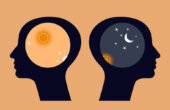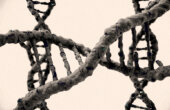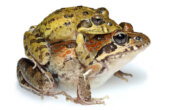Born Knowing: Baby Chicks and Baby Humans
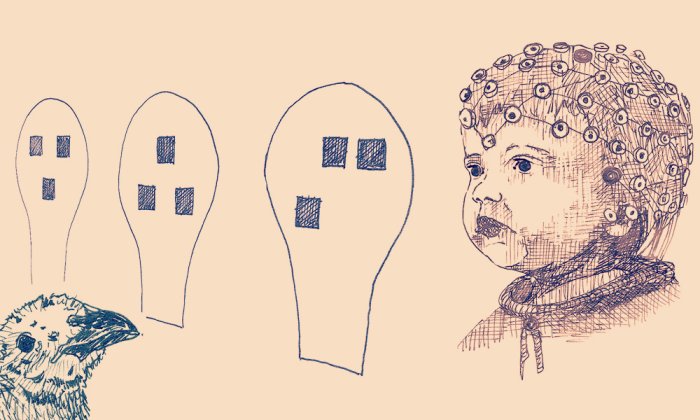
Despite the phylogenetic distance between us — the last common ancestor to birds and mammals dates back almost 300 million years — baby chicks and baby humans seem to have similar patterns for the recognition of stimuli of high social value.
The newborns of both species are attracted by schematic faces in which three high-contrast blobs are arranged in an inverted triangle inside a roundish outline. The same stimulus presented upside down, that is, in the position of a triangle pointing upward, does not arouse excessive interest. Similar to chicks, human newborns just a few hours old prefer to look at a handful of dots that move like a chicken or other biological entity rather than a rigid or randomly moving whole.
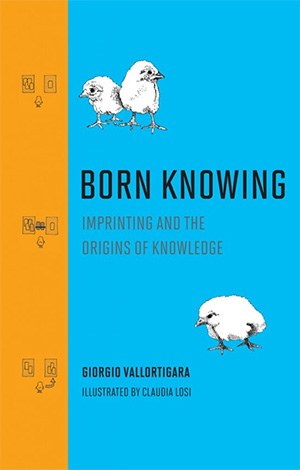
In my laboratory, we observed that newborn children show more pronounced brain activity (as measured by electroencephalographic signals, or EEG) in response to schematic face-like stimuli. Activation in the same regions as the adult cerebral cortex for face recognition is observed, though more roughly delineated, in the newborns.
Interestingly, almost 20 years ago the neuropsychologist Martha Farah reported a rather exceptional clinical case that matches our observations: that of a 16-year old boy who showed all the symptoms of prosopagnosia — a profound inability to recognize faces — while recognition of other types of objects was relatively unimpaired. What was astonishing was the age of the injury, which occurred on the first day of life because of streptococcal meningitis. Clearly, this was evidence that the machinery for face recognition was already there.
It could be argued that, unlike what happens in the laboratory with chicks, it is likely that newborns unavoidably, albeit very briefly, experienced some exposure to faces before the EEG experiment, and thus that they had actually learned to prefer the face-like stimuli rather than having any inborn preference for them. However, this seems not to be the case, because we found that the preference for the schematic face as measured by the EEG decreases, rather than increases, with the passage of hours. Thus, experience of real faces, if it has any effect, seems to diminish rather than enhance the preference.
The face-like stimulus somewhat resembles what ethologists call a “supernormal stimulus,” such as the red-and-white-striped pencil that the ethologist Niko Tinbergen discovered to be as effective as or even more effective than the beak of the parents in attracting the pecking of herring gull chicks.
Self-Propelling Is Living
My colleagues and I went on in search of other stimuli that, for a newly hatched chick or for a human newborn, could constitute signals of the presence of a mother or a social companion. These stimuli are part of a broad category, that of animate objects, which we sharply distinguish from inanimate objects: mothers or stones, moving predators or leaves blown by the wind, schoolmates or bicycles. Scientists refer to this sort of categorization between animate and inanimate objects as “animacy” perception.
Motion, for example, could be a cue for the presence of something alive, but only under certain conditions. Living things move by themselves, whereas stones must be pushed. And the movement of animate things is usually characterized by abrupt variations in speed, with accelerations and decelerations (for this reason, sometimes even the leaves moved by a sudden breeze may appear “animated”).
In a series of experiments, we observed that, soon after birth, the neonates of Homo sapiens and of domestic chicks are sensitive to qualities such as the self-propelled motion of objectsand, more generally, their speed changes. If newborns have to decide which of two objects is plausibly a mother, and they observe that one of the two moves and causes, by bumping into it, the movement of the second, they prefer to choose the first object, the self-propelled one.
The movement of mothers, like that of all animate entities, is driven by a kind of internal energy, while inanimate objects move only if pushed by another object. Thus, chicks and human newborns seem to be Aristotelian creatures (Aristotle believed that self-generated movement was the distinctive trait of animate beings). The mechanisms that support this kind of sensitivity to the presence of animate objects are probably ancient and well preserved during evolution, so much so that scientists recently have identified their signature even in the behavior of fish.
An object that begins to move from a standstill, without anything external making it do so, represents a particular case of change in speed. Adult humans attach greater animacy perception to moving objects that spontaneously change speed. We found that even newly hatched visually naive chicks are attracted to moving objects that change speed, accelerating all of a sudden, compared with those moving at a constant speed.
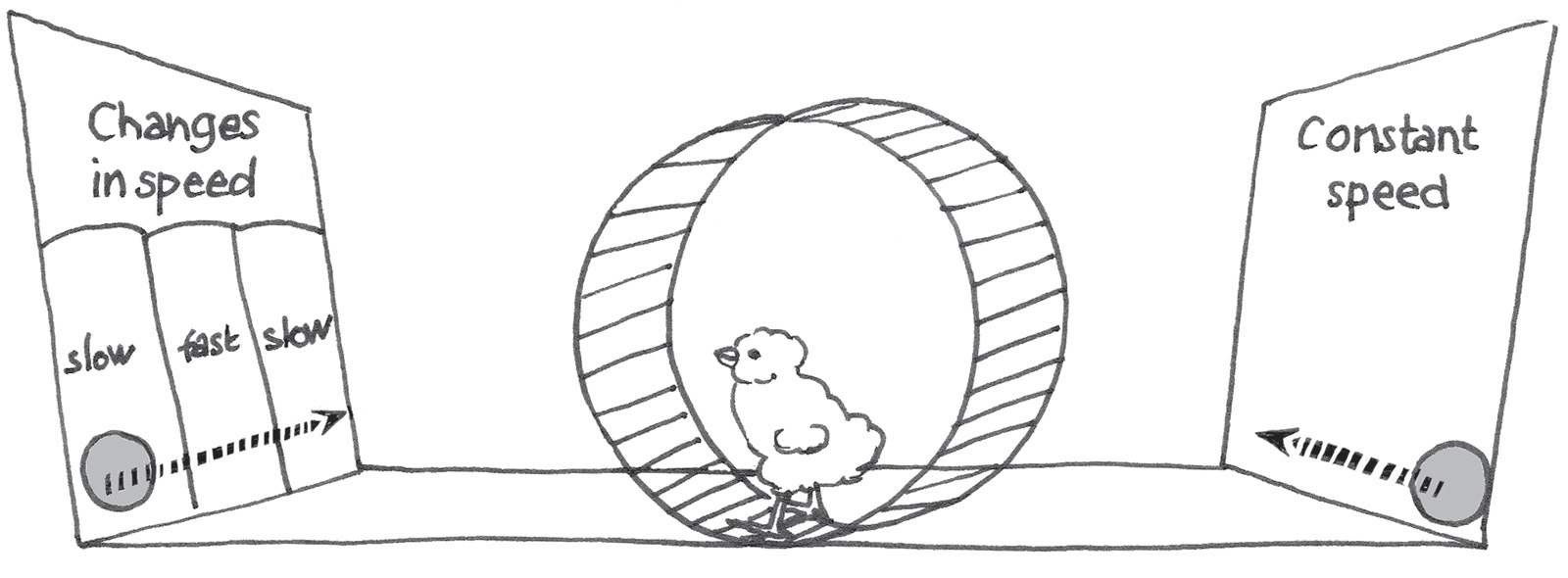
One could argue that chicks are attracted to change because constant speed is boring. The question is, either way, whether it is the presence of a change that is itself attractive (i.e., the mere presence of different speeds) or the possibility of noticing a change (i.e., to see that an object changes speed) which is crucial. When the exact moment of the change of speed is made invisible by an occluding screen placed along the object’s trajectory, it is sufficient to cause any preference to vanish. It is not enough to observe that the disk moves with a different speed before its disappearance and after its reappearance from behind the screen; the very moment of change of speed must be witnessed to judge it as animate.
Findings on our species, however, reveal something more here, likely because human newborns are much more prepared for object grasping and manipulation than chicks will ever possibly be. We noticed that human newborns prefer to look at an object that accelerates first and then decelerates compared with one that moves at a constant speed, but that the same preference does not manifest itself in the case of an object that first decelerates and then accelerates. This directional pattern of acceleration followed by a deceleration characterizes the movement of a hand directed toward a target. In the movements that precede the grasping of an object, the hand first accelerates toward the object and then decelerates when it comes close to it. Even in utero, the hands seem to move with this pattern of acceleration and deceleration. We cannot exclude that this directional preference of human newborns derives from a knowledge of their own movements in utero.
Giorgio Vallortigara is Professor of Neuroscience and Head of the Animal Brain and Cognition Laboratory at the Centre for Mind/Brain Sciences of the University of Trento, Italy. This article is excerpted from his book “Born Knowing.”
